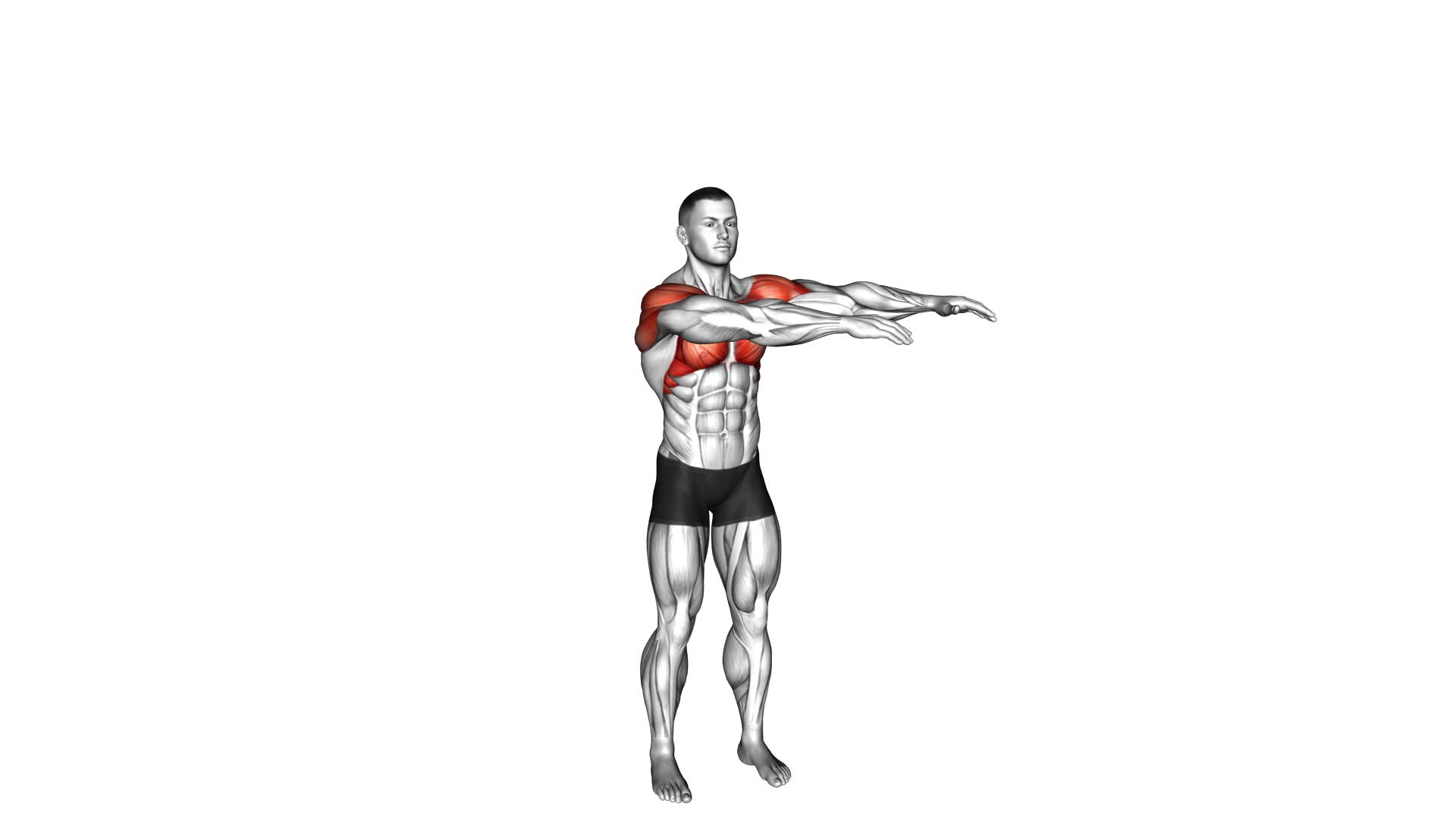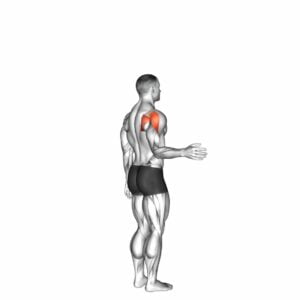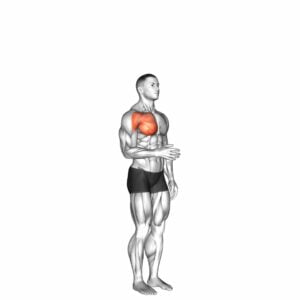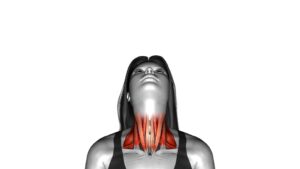Full Arm Rotation – Video Exercise Guide & Tips

Are you looking to strengthen and tone your arms? Look no further! In this video exercise guide, we will show you how to perform full arm rotations with proper form and technique.
Watch This Exercise Video
Whether you're a beginner or a seasoned fitness enthusiast, we've got you covered with modifications for different fitness levels.
Plus, we'll share some expert tips to help you maximize your workout.
Get ready to feel the burn and achieve those strong, sculpted arms you've always wanted. Let's get started!
Key Takeaways
- Enhanced flexibility and mobility
- Increased range of motion in shoulders, elbows, and wrists
- Prevention of injuries and muscle imbalances
- Improved joint health and stability
Benefits of Full Arm Rotation
You can experience enhanced flexibility and mobility through regular practice of full arm rotation. This exercise is highly effective in improving flexibility and preventing injuries.
By performing full arm rotations, you can increase the range of motion in your shoulders, elbows, and wrists, allowing for better overall flexibility. This increased flexibility can be beneficial in various activities such as sports, weightlifting, and everyday tasks that require reaching or lifting.
Moreover, full arm rotations help to prevent injuries by promoting joint health and reducing the risk of muscle imbalances. By regularly performing this exercise, you can strengthen the muscles surrounding your shoulders and improve their stability, which can protect against common shoulder injuries.
Additionally, full arm rotations help to maintain proper alignment and posture, reducing the strain on your joints and muscles. To maximize the benefits, it's important to maintain proper form and technique while performing this exercise.
Proper Form and Technique
To ensure proper form and technique during full arm rotations, focus on engaging your core and maintaining a straight posture throughout the exercise. This will help you maximize the benefits of the exercise and prevent injuries. Engaging your core will provide stability and support for your upper body, allowing you to perform the exercise with control and precision. Additionally, maintaining a straight posture will ensure that you're targeting the correct muscles and avoiding unnecessary strain on your joints.
Before starting the full arm rotation exercise, it's important to warm up properly. This can be done by performing some light cardiovascular exercises such as jogging or jumping jacks to increase blood flow to the muscles and prepare them for the upcoming activity. Warming up will help prevent injuries and improve your overall performance during the exercise.
There are also variations of the full arm rotation exercise that you can incorporate into your workout routine. For example, you can use dumbbells or resistance bands to add resistance and increase the intensity of the exercise. This will challenge your muscles and help you build strength and endurance.
Choosing the Right Weight
To select the appropriate weight for full arm rotations, consider your current strength level and gradually increase the resistance as you progress in your fitness journey. It's important to start with a weight that challenges you but still allows you to maintain proper form and technique throughout the exercise. Choosing a weight that's too heavy can lead to poor form and potential injury, while selecting a weight that's too light may not provide enough resistance to effectively strengthen your muscles.
Before beginning your full arm rotation exercise, it's crucial to warm up properly. This helps to increase blood flow, loosen up your muscles, and reduce the risk of injury. A proper warm-up can include activities such as light cardio exercises or dynamic stretches that target the muscles involved in the full arm rotation movement.
Additionally, when performing full arm rotations, you have the option to use different grip variations. Experimenting with different grips can target different muscles in your arms and shoulders, providing a more comprehensive workout. For example, an overhand grip primarily targets the biceps and forearms, while an underhand grip emphasizes the triceps and shoulders.
Common Mistakes to Avoid
When performing the full arm rotation exercise, it's important to be mindful of common mistakes that can hinder your progress.
One common mistake is incorrect hand placement, which can lead to ineffective movement and potential strain on the wrists.
Another mistake to avoid is overextending the arm, as this can put unnecessary pressure on the joints.
Lastly, make sure to maintain proper form throughout the exercise to maximize its benefits and prevent injury.
Incorrect Hand Placement
Avoid placing your hands incorrectly during full arm rotation exercises to ensure optimal results. Proper hand positioning is crucial for injury prevention and to maximize the effectiveness of the exercise.
When performing full arm rotations, make sure to keep your hands relaxed and avoid gripping the handles too tightly. Placing your hands too far apart or too close together can put unnecessary strain on your wrists and elbows. Instead, aim to position your hands shoulder-width apart, with a firm but comfortable grip.
This will allow for a natural range of motion and help maintain proper alignment throughout the exercise. By paying attention to your hand placement, you can minimize the risk of injury and achieve the best possible results from your full arm rotation workouts.
Overextending the Arm
One common mistake to avoid during full arm rotation exercises is overextending your arm, which can lead to strain and decreased effectiveness. Overextending the joints puts unnecessary stress on them, increasing the risk of potential injuries. To prevent this, keep the movement within a comfortable range of motion and avoid locking your elbows or hyperextending your arm.
Remember to engage your core and maintain proper posture throughout the exercise. Additionally, listen to your body and stop if you feel any sharp or intense pain.
Lack of Proper Form
To maintain proper form and maximize the benefits of full arm rotation exercises, it's important to focus on using correct technique. Improper technique can lead to decreased effectiveness of the exercise and increase the risk of injury.
One common mistake to avoid is overextending the arm, which can strain the shoulder joint and cause discomfort. To prevent this, make sure to keep your arm at a comfortable range of motion and avoid forcing it beyond its natural limits.
Additionally, pay attention to your body positioning and posture throughout the exercise. Improper form can put unnecessary stress on your muscles and joints, increasing the chances of injury.
Remember to always prioritize proper technique to ensure injury prevention and get the most out of your full arm rotation exercises.
Modifications for Different Fitness Levels
You can modify the full arm rotation exercise to accommodate different fitness levels. Here are some options to consider:
- Start with smaller weights or no weights at all and gradually increase the resistance as you get stronger. This allows for progression and helps prevent injury.
- If you have limited shoulder mobility, you can perform the exercise with a smaller range of motion. Focus on keeping your movements controlled and pain-free.
- To make the exercise more challenging, try performing it in a standing position instead of sitting. This engages your core and adds an element of balance to the movement.
- If you find it difficult to maintain proper form throughout the exercise, you can slow down the pace and focus on quality over quantity. This helps prevent injury and ensures that you're targeting the right muscles.
- If you have any existing shoulder or arm injuries, it's important to consult with a healthcare professional before attempting this exercise. They can provide modifications or alternative exercises that are better suited for your needs.
Tips for Getting the Most Out of Your Workout
To get the most out of your workout, it's crucial to focus on proper form. This ensures that you're engaging the right muscles and reducing the risk of injury.
Additionally, efficient time management is key. Plan your workouts in advance, prioritize exercises that target multiple muscle groups, and minimize rest time between sets to maximize the effectiveness of your workout.
Proper Form Importance
Maintaining proper form during your workout is essential for maximizing results and minimizing the risk of injury. To ensure you get the most out of your workout, here are some important tips to follow:
- Warm up exercises: Start your workout with dynamic stretches and light cardio to increase blood flow to your muscles and prepare them for the upcoming workout.
- Focus on alignment: Pay attention to your body's alignment during exercises to prevent strain or injury. Keep your spine neutral and maintain proper posture.
- Engage your core: Activate your core muscles throughout your workout to stabilize your spine and protect your lower back.
- Use controlled movements: Avoid using momentum or swinging your body to complete the exercise. Focus on slow and controlled movements to target the intended muscles effectively.
- Listen to your body: If you feel pain or discomfort during an exercise, stop immediately. It's important to know your limits and modify or skip certain exercises if necessary.
Efficient Time Management
To maximize your workout and make the most efficient use of your time, it's important to implement effective time management strategies.
By incorporating time-saving strategies and prioritizing tasks, you can ensure that you get the most out of your exercise routine.
One key strategy is to plan your workouts in advance. Set specific goals and schedule dedicated time for each exercise. This will help you stay focused and avoid wasting time trying to decide what to do next.
Additionally, multitasking can be a valuable time-saving technique. For example, while doing cardio on a stationary bike, you can also incorporate upper body exercises with dumbbells.
Frequently Asked Questions
Can Full Arm Rotations Help Improve Shoulder Mobility and Flexibility?
Full arm rotations can greatly improve your shoulder mobility and flexibility. It's important to maintain proper form throughout the exercise to avoid any potential injuries. By performing this exercise correctly, you can strengthen the muscles surrounding your shoulder joint and increase your range of motion.
However, be mindful of common mistakes such as using excessive momentum or lifting too heavy of weights, as these can lead to strain or discomfort. Focus on controlled and smooth movements for optimal results.
How Often Should Full Arm Rotation Exercises Be Performed to See Results?
To see results from full arm rotation exercises, it's important to perform them regularly. Consistency is key! Aim to do these exercises at least three times a week.
By incorporating arm rotation benefits into your routine, you can improve shoulder mobility and flexibility. Remember to use proper form and technique for the best results.
Experiment with different arm rotation techniques to find what works best for you. Stay diligent and you'll see progress in no time!
Can Full Arm Rotations Help Reduce the Risk of Shoulder Injuries?
Full arm rotations can help reduce the risk of shoulder injuries. Proper form is essential in performing this exercise to ensure maximum benefit and minimize the risk of injury.
It's important to maintain control throughout the movement and avoid any jerky or sudden motions. If you have a shoulder injury, modifications can be made to accommodate your needs. Consult with a fitness professional or physical therapist for specific modifications tailored to your condition.
Are There Any Specific Warm-Up Exercises That Should Be Done Before Performing Full Arm Rotations?
Before performing full arm rotations, it's important to do specific warm-up exercises to prepare your shoulders. Dynamic stretches and shoulder warm-ups can help increase blood flow to the muscles, improve flexibility, and reduce the risk of injury.
By incorporating these exercises into your routine, you can ensure that your shoulders are properly warmed up and ready for the full arm rotation exercise.
Remember to always prioritize warming up to maximize your workout and prevent potential injuries.
Can Full Arm Rotations Be Done With Resistance Bands Instead of Dumbbells?
Yes, you can definitely do full arm rotations with resistance bands instead of dumbbells.
Using resistance bands offers several benefits such as providing continuous tension throughout the movement and allowing for a wider range of motion.
They're also a great alternative to dumbbells if you don't have access to weights or want to switch up your workout routine.
Incorporating resistance bands into your full arm rotation exercises can help strengthen and tone your upper body muscles effectively.
Conclusion
In conclusion, full arm rotation is a beneficial exercise that helps improve upper body strength and flexibility.
By following proper form and choosing the right weight, you can maximize the effectiveness of this exercise.
It's important to avoid common mistakes and make modifications based on your fitness level.
Remember to stay consistent and gradually increase the intensity of your workouts for optimal results.
Keep these tips in mind to get the most out of your full arm rotation routine.

Author
Years ago, the spark of my life’s passion ignited in my mind the moment I stepped into the local gym for the first time. The inaugural bead of perspiration, the initial endeavor, the very first surge of endorphins, and a sense of pride that washed over me post-workout marked the beginning of my deep-seated interest in strength sports, fitness, and sports nutrition. This very curiosity blossomed rapidly into a profound fascination, propelling me to earn a Master’s degree in Physical Education from the Academy of Physical Education in Krakow, followed by a Sports Manager diploma from the Jagiellonian University. My journey of growth led me to gain more specialized qualifications, such as being a certified personal trainer with a focus on sports dietetics, a lifeguard, and an instructor for wellness and corrective gymnastics. Theoretical knowledge paired seamlessly with practical experience, reinforcing my belief that the transformation of individuals under my guidance was also a reflection of my personal growth. This belief holds true even today. Each day, I strive to push the boundaries and explore new realms. These realms gently elevate me to greater heights. The unique combination of passion for my field and the continuous quest for growth fuels my drive to break new ground.







